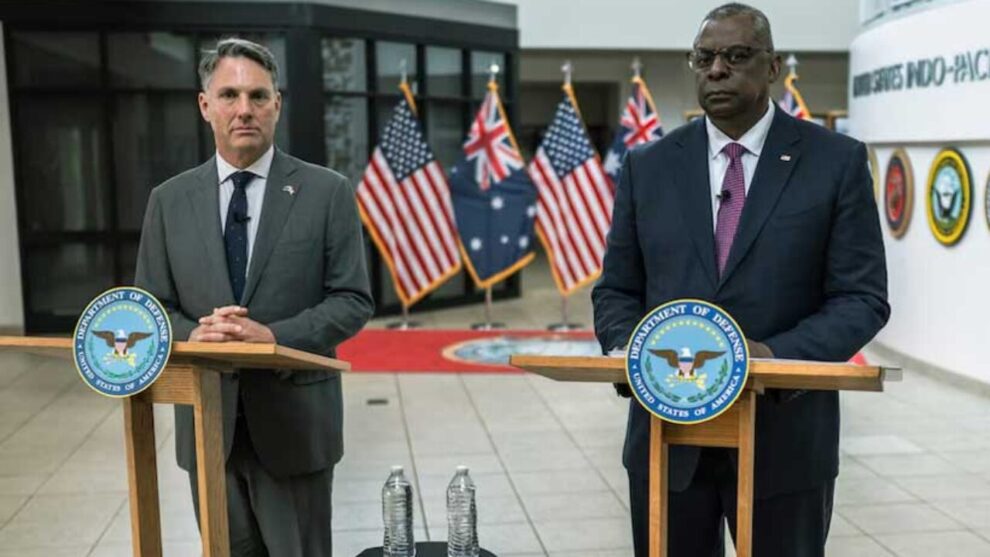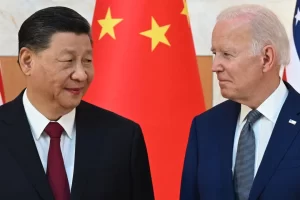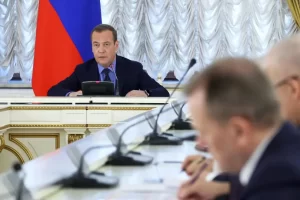Australia has a longstanding alliance and engagement with the United States, which is widely regarded as one of its foremost allies in the Indo-Pacific and Western Pacific regions. Given the current geopolitical landscape, it is evident that the United States aligns closely with Australia in terms of strategic objectives and shared values. The security guarantees and military assistance that the United States has given to Australia further reinforce this alignment. Australia seeks to strengthen its collaboration with the United States and other allied nations, particularly in the Indo-Pacific area, which is seeing a rise in China’s influence.
In light of these advancements, Australia has officially declared its plan to buy a fleet of 20 C-130 Hercules aircraft from the United States, estimated at $6.6 billion. The formal verification of the agreement occurred before the anticipated meeting between U.S. Defense Secretary Lloyd Austin, Secretary of State Antony Blinken, and their Australian counterparts for their annual deliberations, held in Brisbane, Australia. The number of the second-largest heavy transport aircraft in use by the Australian Air Force will significantly increase as a result of this deal, by 66.67%. The proclamation comes after the U.S. Congress approved an expanded agreement that included 24 Lockheed Martin propellor-driven aircraft the year before. According to Defense Industry Minister Pat Conroy, it is projected that the first deployment of the first four-engine Hercules will occur in the year 2027. The procurement will almost triple the current fleet, indicating a significant improvement in the Royal Australian Air Force’s capability for mobility and transportation. Furthermore, the expansion of the fleet size offers a heightened capacity for concurrent deployment across diverse operations.
Additionally, Australia has acquired a fleet of 12 Sikorsky Romeo Seahawk helicopters from the United States. These helicopters are well recognized for their exceptional adaptability, as they possess the ability to effectively perform a diverse array of missions, including anti-submarine warfare and anti-surface warfare, as well as intelligence, surveillance, and reconnaissance activities. Australia is acquiring aircraft from the United States for a variety of reasons. The Australian Air Force now has a fleet including eight Boeing C-17A Globemaster aircraft, which are classified as heavy transport jet planes. In light of the difficulties encountered by the current MRH 90 Taipan helicopter fleet, including concerns about operational availability and performance after their deployment, there is a need for an appropriate substitute. Furthermore, it aims to optimize and substantiate the magnitude and operational efficacy of its support and logistics helicopter fleet to meet the demands of expanded naval undertakings. Also, Australia enhances its interoperability and collaborative efforts with the United States and other ally states, particularly within the Indo-Pacific region, which is seeing an expansion of China’s influence.
The American aircraft are built to be compatible with the Australian Air Force’s present system architecture. These aircraft can do a diverse array of tasks, including anti-submarine warfare, anti-surface warfare, intelligence gathering, surveillance and reconnaissance operations, transportation, and providing humanitarian aid. The aircraft that the United States uses has sophisticated features like nuclear propulsion, stealth capabilities, high velocity, extended operational duration, and significant cargo capacity. In addition, the United States has consented to the dissemination of highly classified naval nuclear information to Australia. The United States and Australia are cooperating on the current iteration of the Talisman Sabre military exercise in Australia’s coastal regions. In the present year, the exercise encompasses the involvement of thirteen nations and a total of more than thirty thousand military personnel. The drill occurs in the context of increasing global concerns over China’s more assertive conduct.
From an economic standpoint, the alliance provides backing for the security and prosperity of the Indo-Pacific region, which encompasses the world’s most vibrant economies and has the potential to spearhead global recovery from the ongoing epidemic. From an ideological perspective, the alliance upholds the international rules-based system, which guarantees the autonomy of each nation to make independent sovereign choices without any kind of coercion, particularly concerning China. From a geopolitical perspective, the alliance serves to improve compatibility and collaboration with other allied nations, particularly within the Quad, which includes the United States, Australia, India, and Japan, and is actively addressing significant regional issues. Finally, the alliance procures the most advanced technology and capabilities to meet its military requirements, including nuclear propulsion, high speed, long endurance, and significant payload capacity.
The growing defense cooperation between the US and Australia further pursues a regional perspective. The government of the Solomon Islands sent an invitation to the Regional Assurance Mission to address the protracted period of civil unrest in the region. But the withdrawal of military and police personnel from Australia occurred in 2017. However, Prime Minister Manasseh Sogavare’s official appeal resulted in the redeployment of military personnel to the Solomon Islands in 2021. It also renewed its security pact with Australia in 2023. The objective of their deployment was to quell occurrences of anti-government and anti-China uprisings. The recently signed security agreements between the South Pacific nation and China have once again prompted apprehensions over the security implications for the United States and Australia concerning the Solomon Islands.
China has expressed severe criticism of the military collaboration between Australia and the United States, asserting that it undermined peace and stability in the area, exacerbated an arms race, and undermined international efforts to prevent the spread of nuclear weapons. China has issued a cautionary statement on the potential ramifications of the agreement on bilateral ties between China and Australia, emphasizing that Australia would be held accountable for all of the consequences. China’s potential reaction to the military cooperation might include expediting its military modernization and expansion efforts inside the Indo-Pacific region. China may potentially pursue the enhancement of its weaponry and capabilities, including the development of hypersonic missiles, aircraft carriers, and nuclear submarines, as a means to address what it perceives as a potential threat emanating from the United States and its allied nations. China may potentially enhance its military presence and engagements in the contested regions, including the South China Sea and the Taiwan Strait, to assert its sovereignty and safeguard its interests. Another factor contributing to the relationship between the United States and Australia is the increasing influence of China in the Solomon Islands.
In conclusion, the longstanding strategic cooperation between Australia and the United States has spanned over seven decades, yielding several advantages and challenges for both nations. Strategic tensions in the Indo-Pacific region, where Australia and the United States share interests and values, have increased as a result of China’s growing aggressiveness. So, Australia and the United States are seeking to strengthen their collaboration in the areas of defense, technology, and security to mitigate China’s regional influence and military capabilities in the region.
Source : Modern Diplomacy






































